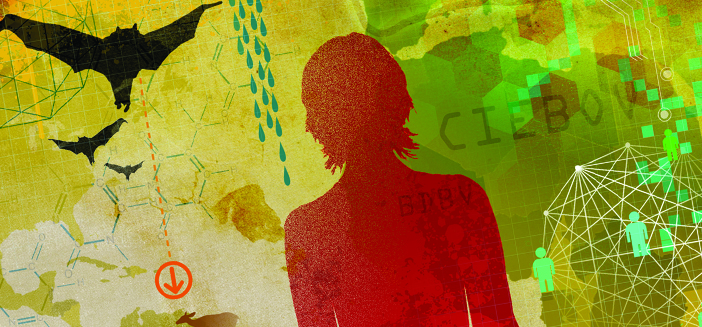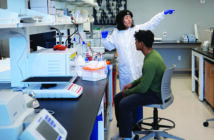“The fields are small, and the agrarian practices are very different” than in Brazil, he says. “Instead of multiple pixels per field, India has five fields per pixel so we need different satellite sensors.” Mustard differentiates between frontier landscapes, like what he’s studied in Brazil, and patchier mosaics like India’s. By layering the infectious disease database with his remote sensing findings, they can explore whether “the initial engagement with the frontier is the area with the greatest number of outbreaks, or if it’s in the more complicated, fragmented landscapes,” he says.
Once the team has acquired and sifted through the data, he expects they’ll find important relationships between land use change and disease. Already the data in India show that “outbreaks are strongly correlated with land use change,” Mustard says. “There are states where outbreaks are more common
or less common, and we can correlate that with urban versus rural population concentrations.”
GIS offers another layer of data analysis, which is where Lynn Carlson, MA, GISP, who manages Brown’s Environmental and Remote Technologies Lab, comes in. Though mapping an epidemic and its affiliated data who, what, when, how may sound relatively straightforward, the “where,” in this project, was anything but. Because the reports documented outbreaks by place name, rather than longitude and latitude, accurately pinpointing them on a map offered countless challenges.
“For example, in the text, 500 people were noted to have contracted salmonella in four or five different places, so there’s no single longitude and latitude for that outbreak,” Carlson says. “So what is the best way to locate that disease outbreak? Do you find the center of gravity? Do you map each one?”
Furthermore, she says, spellings of some place names varied, while others were so obscure that even the most thorough geospatial intelligence databases didn’t list them. Carlson also had to figure out what to do when an agency reported an epidemic location by region, such as “eastern India.” “I made a script in GIS that took every country and divided it into quarters by cardinal direction and located the centers of the quarters, so now we have a longitude and latitude point,” she says. “But that has its own troublesome issues for example, what is ‘western Chile’?”
Other variables create further complications. Wealthier countries may have more outbreak records not because they are more prone to disease but because they have better reporting. The data also need to reflect different densities of human and animal host populations. “The maps can give false impressions if you don’t understand the underlying premise, the text behind them, the variables,” Carlson says.
The project is very much “a work in progress,” she adds, but the data hold exciting promise. Patterns are already emerging in individual countries that they’ve analyzed, such as time lapse maps that can show possible increases in the frequency of certain outbreaks. “For example, we can see patterns of anthrax, do a time lapse, and summarize the counts,” Carlson says. “So imagine ramping this up to the entire world.”
The Big Picture
More than 1,400 pathogens cause infectious diseases in Homo sapiens; researchers have long mapped the biggest offenders, like AIDS and the flu, but even headline grabbers like Ebola haven’t received the careful scrutiny that Smith’s team is undertaking. At the Centers for Disease Control and Prevention, for example, “individual diseases get their full attention and focus, as opposed to looking at all diseases in aggregate,” she says.




